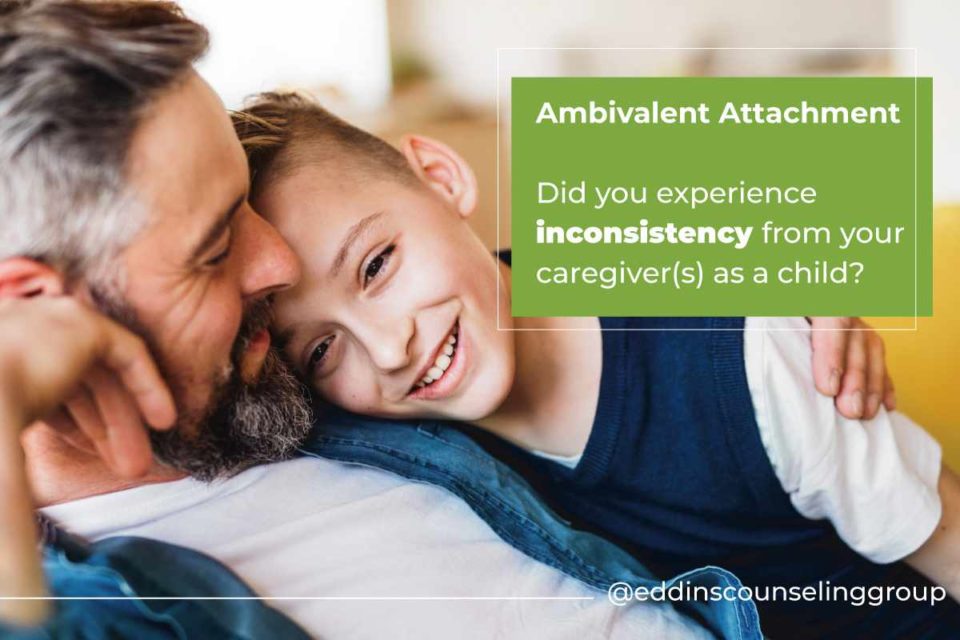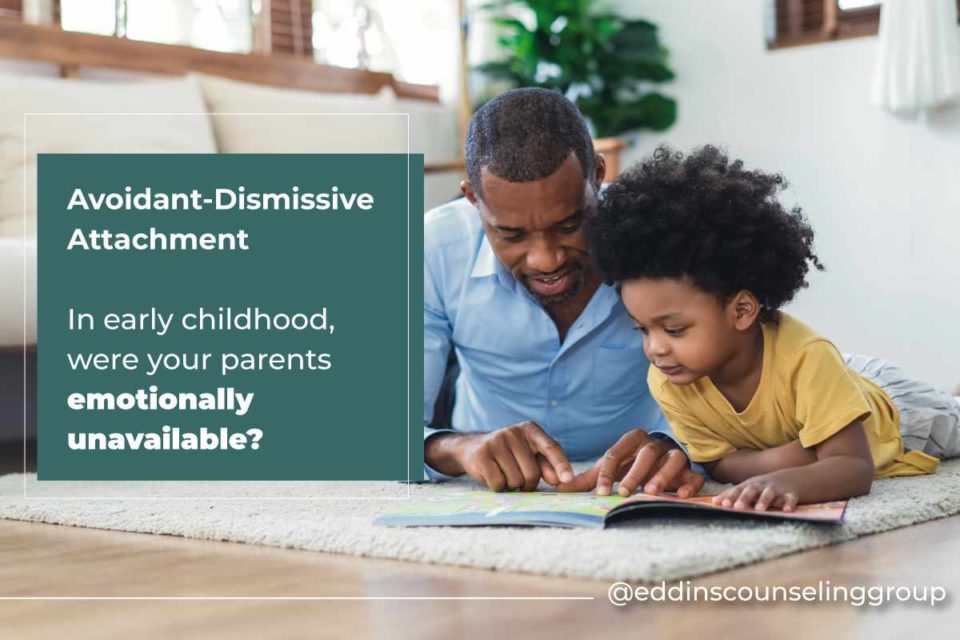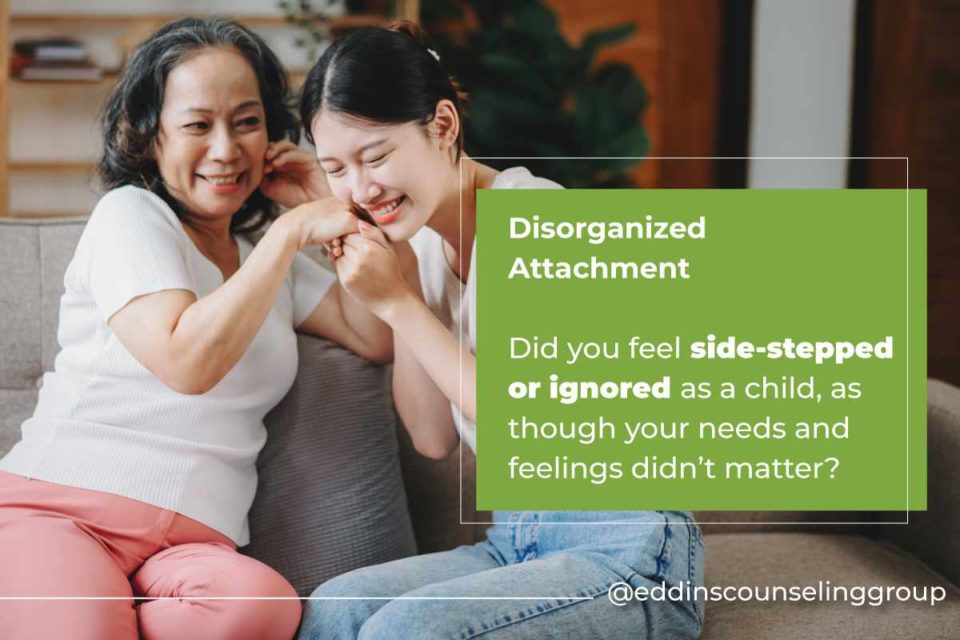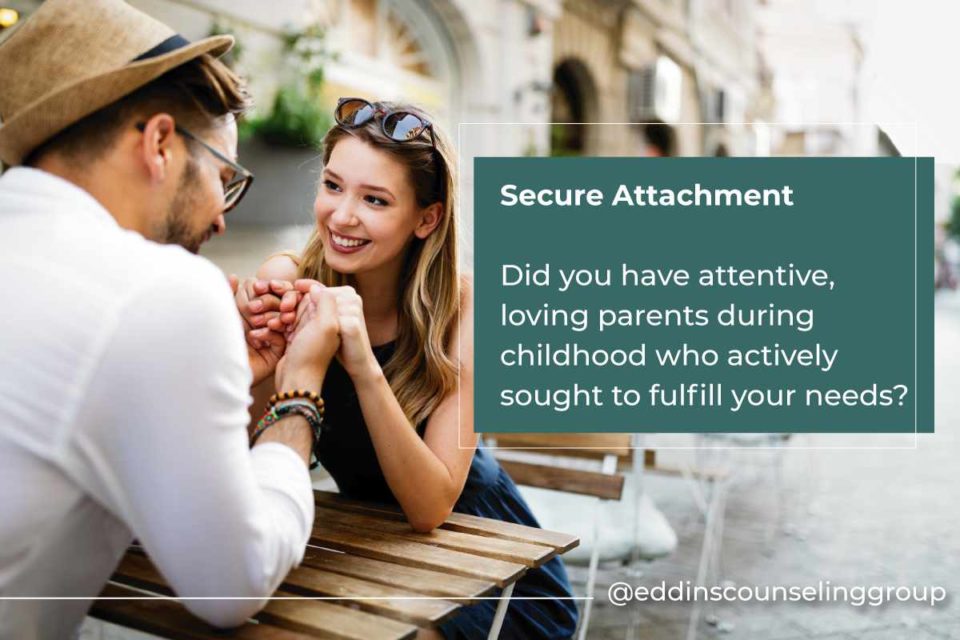January 2, 2023
What’s Your Attachment Style?
Written by Sara Lane
Posted in Relationships, Couples, Marriage and with tags: Relationships, attachment

Every story is different.
- Every part of you is unique, from the hairs on your head to the shape of your toes.
- Have you ever considered what uniqueness you bring to your relationships as well?
Maybe your love started as friends and blossomed into fiancés. Alternatively, your friend gang and you may have a history of your own.
So what makes you and the way you love others unique? Quite a lot, according to psychologists.

What’s Your Attachment Style?
Everyone approaches relationships differently, meaning that the ways in which we can relate to each other and feel comfortable in relationships will vary.
Depending on how you learned about relationships throughout your childhood, you may have a way of relating to others that makes you feel closer or more distant from the people around you.
These relationship patterns are referred to as unique attachment styles.
There isn’t a “right or wrong” attachment style, though some styles can lead to healthier relationships in the long run.
While the largest contributing factor to our attachment styles is our family of origin and early childhood role models, attachment styles can be modified.
Just because we may have learned unhealthy coping strategies early on doesn’t mean we need to use those styles indefinitely. We can make changes depending on the areas that feel least useful in our relationships.
Take our relationship quiz to learn more about your attachment style.
Here are the four main attachment styles and their impact on relationships:
1) Ambivalent Attachment

Also referred to as Anxious-Preoccupied Attachment, Ambivalent Attachment users may feel uncertain in their relationships.
People with an Ambivalent Attachment style of relationship may feel as though they need constant reassurance that things are going well, that they are loved and accepted, or that they are valued in the relationship.
Those who experience Ambivalent Attachment style may have experienced inconsistency from their caregivers as children. While their needs for love, companionship, shelter, and basics were met at times, they may have felt absent from their caregivers at other times.
This inconsistency may have lead you to feel anxious of a future lack in your relationships, as though your needs may one day be left unmet and you may have to fend for yourself.
Ambivalent Attachment style adults may experience these patterns in committed relationships:
- Craving intimacy and feelings of closeness to your partner, while also feeling scared that he or she will leave
- Distrust or hesitancy to allow your heart to believe that you are fully able to rely on your partner
- An obsession or overfixation on your partner
- Difficulty making and observing each other’s emotional and social boundaries
- Trouble sharing relationships with friends or family
- Viewing others as a threat to your relationship
- Asking your partner to solely hang out with you all of the time, without giving them an opportunity to foster other relationships
- Needing constant reassurance from your partner that you are loved, wanted, and accepted in the relationship
- Feelings of anxiety or jealousy when you are away from your partner
- Clinginess or feeling needy
- Wanting lots of attention from your partner all or most of the time
- Letting your self-worth be determined by how well your relationship with your partner is going
- Being controlling, manipulative, or using guilt to persuade your partner to keep close to you
If this sounds like you, you may want to put up boundaries for yourself – as hard as they are.
- Allow yourself to make trust milestones, and strive to give your partner the benefit of the doubt.
- When you aren’t sure if your partner loves or accepts you as you are, remind yourself of the evidence you have: write down those affirmations and acts of kindness to remind you that you are wanted and accepted when you’re feeling distant.
- Avoid the pitfall of guilt and manipulation. No one enjoys feeling manipulated; as hard as it is, try to allow for you and your partner to spend time regularly away from each other. During these times, pour back into yourself by doing self-care, fostering other friendships, and giving yourself a chance to be independent.
2) Avoidant-Dismissive Attachment

If you just read the last attachment style and thought “I’m nothing like this”, read on: this attachment style may be for you.
Avoidant-Dismissive Attachment is the complete opposite of Ambivalent Attachment style.
For Avoidant-Dismissive Attachment adults, relationships can be difficult to pursue or engage in as they are wary and suspicious of getting too close. These adults tend to be emotionally independent, preferring to ‘pull themselves up by their bootstraps’ then rely on others for connection – or have others rely on them.
In early childhood, adults with Avoidant-Dismissive Attachment may have had parents who were emotionally unavailable.
They may have felt rejected, unwanted, or a burden to their family as a child.
This may have resulted in an innate belief that they are on their own, and must fend for themself in order to meet their basic needs for love and connection.
The irony is of course that there can be no love and connection without being vulnerable and opening up to someone else.
That independent mindset may lead to loneliness and a lack of connection with others down the road.
As Avoidant-Dismissive Attachment adults push away love and connection to/from others, they build walls that others find difficult to climb, leading to relationship patterns over time:
- A tendency to be relationally independent
- Not letting others know too much about yourself
- Being closed off or withdrawn
- Preferring one night stands or casual relationships rather than deeply personal and vulnerable connections
- Minimizing or disregarding your partner’s feelings to protect them or yourself
- Keeping secrets in relationships
- Ending a relationship to regain a sense of freedom
- Avoiding intimacy altogether
The main culprit here is a deep distrust of relationships. At the heart of Avoidant-Dismissive Attachment adults is fear.
- Fear that their needs won’t be met.
- Fear that they’ll start to trust, and then the rug will be swept out from underneath them.
- Fear that intimacy is asking for heartbreak.
If Avoidant-Dismissive Attachment adults can brave their fear of connection, they may find a more meaningful way of living life.
3) Disorganized Attachment

Also referred to as Fearful-Avoidant Attachment, Disorganized Attachment is particularly common in adults who have experienced abuse.
Many adults with this attachment style may have felt side-stepped or ignored as a child, as though their needs and feelings didn’t matter.
This deep-seated trauma significantly affects their lives today, and can lead to the following patterns:
- Feeling unsettled or confused by relationships
- Being insensitive, harsh, or selfish in your relationship with your partner
- Explosive or abusive behavior
- Being just as hard on yourself as you are on others
- Not taking responsibility for your actions
- Alcohol or drug abuse
- Craving security and safety in relationships, but feeling unworthy of love / afraid of getting hurt
Abuse, neglect, and trauma run rampant in adults with Disorganized Attachment. To unlearn these heartbreaking rules of attachment, counseling is a great place to start.
In therapy, you can share the pain you experienced as your therapist validates that experience and shows you opportunities for growth.
While it may not be easy, seeking help is the first step towards positive, healthy relationships.
4) Secure Attachment

Perhaps the ‘happy ending’ for attachment styles, Secure Attachment adults have a beautiful balance of support and independence.
While it doesn’t mean that these adults are free of relationship problems, it does mean that they’re able to connect and enjoy time away from relationships in a healthy way.
It’s likely that these adults had attentive, loving parents during childhood who actively sought to fulfill their needs. Love and relationships feel a safe place for them because they were modeled as healthy opportunities for connection early on.
Adults with Secure Attachment often exhibit positive patterns in relationships:
- Feeling happy for your partner to rely on you
- Enjoying the comfort and emotional intimacy of relationships
- Seeing you and your partner as a “team” when facing problems and difficulties in your relationship
- Maintaining emotional harmony independently
- Finding satisfaction with your partner, without fear of that ending when you are apart
- Managing conflict successfully
While these adults don’t have it all together, they are positively situated to enjoy lifelong healthy and happy relationships with a secure attachment style.
Yearning for Better Connections?

Try improving your relationship habits by working on your attachment style. Make positive, healthy steps to provide a better connection with your partner while remaining strong in yourself and other relationships.
If you want to better your relationships and improve your attachment style, reach out to one of our therapists in Houston, Montrose, or Sugar Land today and ask for a counselor who specializes in attachment theory.
We’re here to see your relationships thrive.
Grounding & Self Soothing
Get instant access to your free ebook.



















